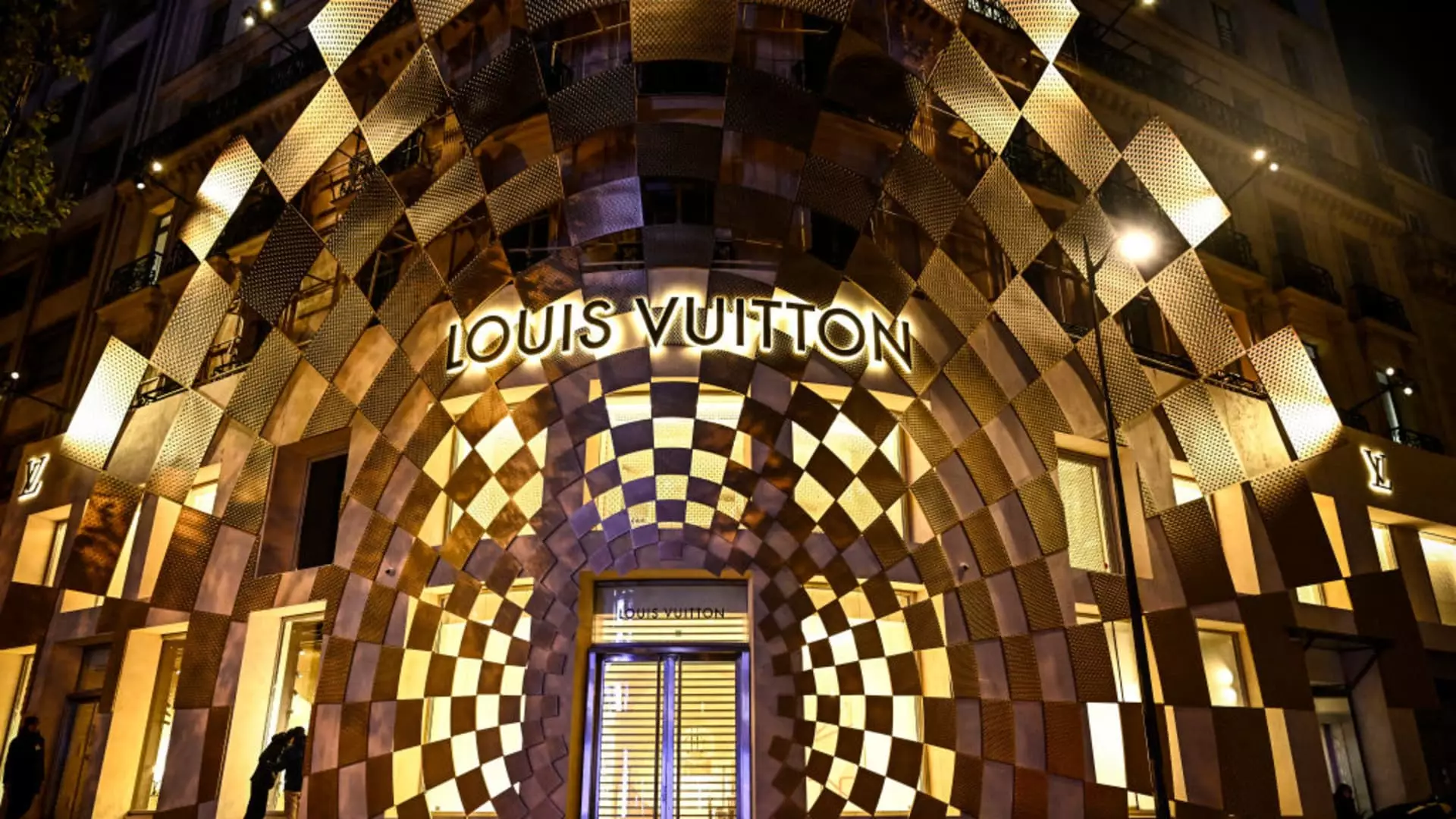On Wednesday, LVMH (Moët Hennessy Louis Vuitton), the world’s leading luxury conglomerate, saw its share price decline significantly following the release of its annual financial results. Although the company’s revenues for 2024 reached an impressive 84.68 billion euros ($88.27 billion), surpassing analysts’ predictions, the uncertainty surrounding the wider luxury market loomed large. This situation raises questions about whether LVMH’s performance serves as a promising indicator for the luxury sector or merely highlights existing vulnerabilities.
While LVMH reported an organic growth of 1% from the previous year, which may seem modestly positive, the results were marred by declining sales in two of the company’s lucrative segments: fashion and leather goods, and wines and spirits. These areas, critical to the company’s overall success, are often seen as bellwethers of consumer sentiment and spending power. With shares falling by 6.42% shortly after the announcement, the market’s reaction suggests that investors are wary of larger trends affecting the entire luxury sector, particularly in the context of ongoing economic challenges and disappointing performance in key regions.
The luxury sector had recently witnessed bright spots, particularly following Richemont’s record quarterly sales during the festive season. Such performances set high expectations for major players like LVMH, making its more subdued results particularly impactful. Mamta Valechha, a consumer discretionary analyst at Quilter Cheviot, noted that although LVMH showed improvements compared to its past performance, they were less remarkable than those of its competitors, like Richemont and Burberry. This situation elucidates the competitive landscape of luxury goods: where peer performance can cast a long shadow over individual results.
Despite the pressures, there are brighter areas within the company’s portfolio. The growth in LVMH’s selective retailing division, especially its Sephora brand, and its perfume and cosmetics lines continue to display robust demand, primarily driven by consumers in the U.S., Europe, and Japan. However, the substantial lag in the Asia Pacific region, particularly China, highlights a critical area of concern. Recent years have shown a fluctuating Chinese consumer market, which could signal ongoing uncertainty for luxury brands heavily reliant on this demographic.
As LVMH navigates this complex environment, its experience could foreshadow challenges for the broader luxury market. While the company is currently up approximately 14% year-to-date and has reclaimed its status as Europe’s most valuable company, the question remains: how sustainable is this growth given the recent dip? Investors, analysts, and consumers alike will be observing closely for future reports from LVMH and its peers to gauge whether this recent retreat is a blip or indicative of more systemic issues within the luxury industry. The performance of LVMH may indeed serve as a cautionary tale, emphasizing the importance of adaptability in these uncertain economic waters.


Leave a Reply